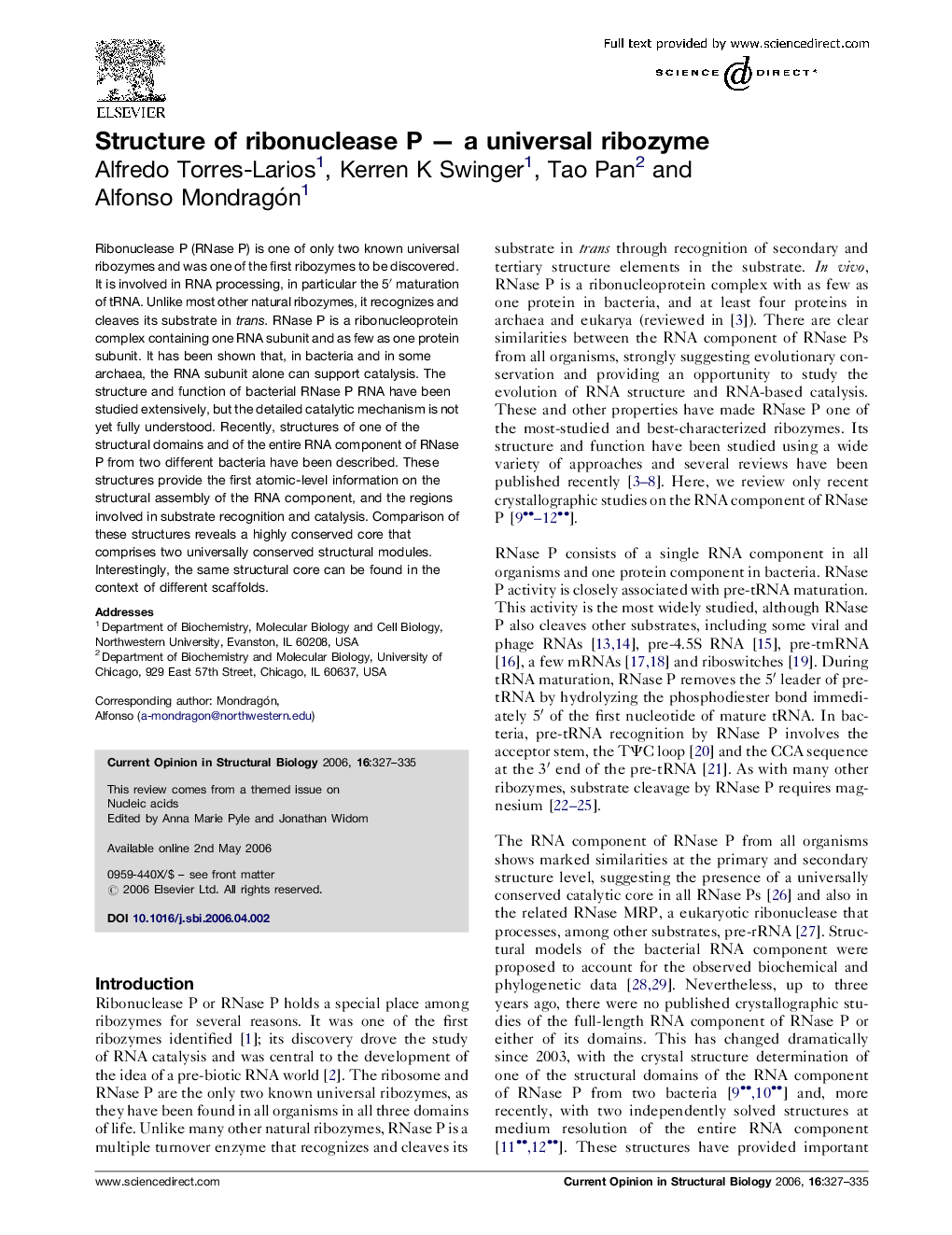| Article ID | Journal | Published Year | Pages | File Type |
|---|---|---|---|---|
| 1979595 | Current Opinion in Structural Biology | 2006 | 9 Pages |
Ribonuclease P (RNase P) is one of only two known universal ribozymes and was one of the first ribozymes to be discovered. It is involved in RNA processing, in particular the 5′ maturation of tRNA. Unlike most other natural ribozymes, it recognizes and cleaves its substrate in trans. RNase P is a ribonucleoprotein complex containing one RNA subunit and as few as one protein subunit. It has been shown that, in bacteria and in some archaea, the RNA subunit alone can support catalysis. The structure and function of bacterial RNase P RNA have been studied extensively, but the detailed catalytic mechanism is not yet fully understood. Recently, structures of one of the structural domains and of the entire RNA component of RNase P from two different bacteria have been described. These structures provide the first atomic-level information on the structural assembly of the RNA component, and the regions involved in substrate recognition and catalysis. Comparison of these structures reveals a highly conserved core that comprises two universally conserved structural modules. Interestingly, the same structural core can be found in the context of different scaffolds.
